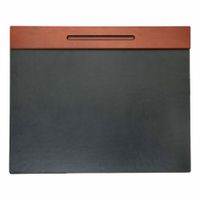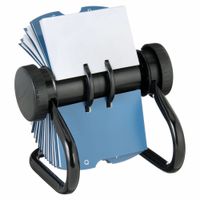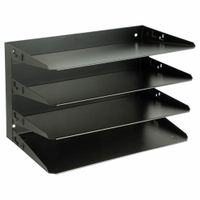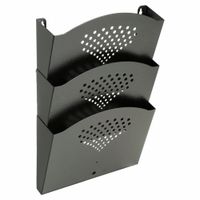Call +(254) 703 030 000 / 751 483 999 / 721 704 777
- Home
- Office Supplies
- Office Organizers
.....Read More
Frequently Asked Questions
1. What are the best office organizers for keeping files and supplies accessible?
1. **Desktop File Organizers**: These are essential for keeping frequently used files within arm's reach. Options include tiered trays, vertical file sorters, and step file organizers. They help in categorizing documents by priority or project.
2. **Filing Cabinets**: Available in various sizes, filing cabinets are ideal for storing large volumes of documents. Look for models with lockable drawers for added security. Mobile filing cabinets can be moved easily, providing flexibility in office layout.
3. **Wall-Mounted Organizers**: These save desk space and keep files visible. Options include wall pockets, hanging file systems, and pegboards with hooks for supplies. They are perfect for small offices or home workspaces.
4. **Drawer Organizers**: These are useful for keeping office supplies like pens, paper clips, and sticky notes neatly arranged. Adjustable dividers allow customization to fit different items.
5. **Rolling Carts**: With multiple tiers, rolling carts can hold files, supplies, and even small office equipment. They are portable, making it easy to move items between different work areas.
6. **Magazine Holders**: These are versatile for storing not just magazines but also files, notebooks, and folders. They can be placed on desks or shelves for easy access.
7. **Labeling Systems**: Label makers or pre-printed labels help in identifying contents quickly, reducing time spent searching for documents.
8. **Cable Management Solutions**: Cable trays, clips, and sleeves keep cords organized and prevent tangling, maintaining a tidy workspace.
9. **Multi-Function Desk Organizers**: These combine storage for files, pens, and gadgets in one unit, maximizing desk space.
10. **Digital Organizers**: For a paperless approach, digital filing systems and cloud storage solutions keep documents accessible from any device, reducing physical clutter.
2. How do desk supply organizers help maintain a neat workspace?
Desk supply organizers help maintain a neat workspace by providing designated spaces for various items, reducing clutter and enhancing efficiency. They offer compartments and sections for pens, paper clips, sticky notes, and other office supplies, ensuring everything has a specific place. This organization minimizes the time spent searching for items, thereby increasing productivity. By keeping supplies neatly arranged, they prevent the accumulation of unnecessary items, promoting a minimalist and tidy environment.
Moreover, desk organizers can be tailored to individual needs, accommodating different types of supplies and personal preferences. This customization ensures that frequently used items are easily accessible, while less frequently used items are stored away, maintaining a clean surface. The visual appeal of a well-organized desk can also contribute to a more pleasant and motivating work atmosphere, reducing stress and enhancing focus.
Additionally, desk organizers can help in managing cables and electronic accessories, preventing tangles and potential damage. This not only keeps the workspace tidy but also ensures the longevity of electronic devices. By promoting a systematic approach to organization, desk supply organizers encourage consistent maintenance of the workspace, fostering habits that contribute to long-term neatness and orderliness.
In summary, desk supply organizers streamline the workspace by providing structure, reducing clutter, and enhancing accessibility, ultimately leading to a more efficient and pleasant work environment.
3. What are the benefits of using index card and business card holders?
Index card and business card holders offer several benefits that enhance organization, accessibility, and professionalism.
Firstly, they provide a structured way to organize information. Index card holders allow users to categorize and store cards systematically, making it easy to retrieve specific information quickly. This is particularly useful for students, researchers, or professionals who need to manage large volumes of data or notes.
Secondly, business card holders help maintain a professional image. By keeping business cards neatly organized, individuals can present themselves as organized and detail-oriented. This is crucial during networking events or meetings where first impressions matter.
Additionally, both types of holders protect the cards from damage. They prevent cards from bending, tearing, or getting lost, ensuring that the information remains intact and legible over time. This durability is essential for preserving important contacts or notes.
Moreover, these holders enhance portability. Compact and lightweight, they allow users to carry a significant amount of information without bulk. This is particularly advantageous for professionals who travel frequently or attend multiple meetings and conferences.
Furthermore, using holders can improve efficiency. With a well-organized system, users can save time by quickly locating the needed card, whether it’s a contact’s business card or a reference note on an index card. This efficiency can lead to increased productivity and better time management.
Lastly, they offer customization options. Many holders come with features like dividers, tabs, or labeling systems, allowing users to tailor the organization to their specific needs. This flexibility ensures that the system works effectively for different types of information and personal preferences.
In summary, index card and business card holders provide organization, protection, professionalism, portability, efficiency, and customization, making them valuable tools for managing information and contacts.
4. How do letter trays and file holders improve document organization?
Letter trays and file holders significantly enhance document organization by providing a structured and efficient system for managing paperwork. They help categorize and prioritize documents, reducing clutter and making it easier to locate specific items quickly.
Letter trays are typically stacked, allowing for vertical organization, which maximizes desk space. Each tray can be designated for different types of documents, such as incoming mail, outgoing mail, or documents requiring immediate attention. This separation ensures that important papers are not overlooked and helps maintain a clear workflow.
File holders, on the other hand, offer a more permanent storage solution. They can be used to organize documents by category, project, or client, and are often labeled for easy identification. This system allows for quick retrieval of documents, saving time and increasing productivity. File holders can be placed on desks or shelves, providing flexibility in how space is utilized.
Both tools contribute to a tidy and professional workspace, which can enhance focus and efficiency. By reducing the time spent searching for documents, they allow individuals to concentrate on more critical tasks. Additionally, a well-organized system can improve collaboration, as team members can easily access shared documents.
In summary, letter trays and file holders streamline document management by providing a clear, accessible, and efficient organizational structure. They help maintain order, improve productivity, and support a professional work environment.
5. What are the advantages of using wall files and partition organizers?
Wall files and partition organizers offer several advantages in both home and office settings:
1. **Space Optimization**: They utilize vertical space, freeing up desk and floor areas. This is particularly beneficial in small or crowded environments where maximizing available space is crucial.
2. **Improved Organization**: These tools help categorize and store documents, stationery, and other items systematically. This reduces clutter and makes it easier to locate items quickly, enhancing productivity.
3. **Enhanced Accessibility**: By keeping frequently used items within arm's reach, wall files and partition organizers improve workflow efficiency. Users can access necessary documents or tools without interrupting their tasks.
4. **Aesthetic Appeal**: Available in various designs and materials, they can complement the decor of a room or office, contributing to a more professional and organized appearance.
5. **Customization and Flexibility**: Many wall files and partition organizers are modular, allowing users to customize their setup according to their specific needs. This adaptability makes them suitable for various tasks and environments.
6. **Cost-Effectiveness**: They are generally affordable and provide a cost-effective solution for organizing spaces without the need for expensive furniture or storage systems.
7. **Reduced Stress**: A well-organized space can reduce stress and improve focus by minimizing distractions and creating a more pleasant working environment.
8. **Increased Productivity**: By streamlining access to necessary materials and reducing time spent searching for items, these organizers can significantly boost productivity.
9. **Durability and Maintenance**: Made from sturdy materials, they are durable and require minimal maintenance, ensuring long-term use.
10. **Environmental Impact**: By promoting efficient use of space and reducing the need for additional furniture, they can contribute to a more sustainable and environmentally friendly workspace.
6. How can cable organizers reduce clutter in an office?
Cable organizers reduce clutter in an office by providing a systematic way to manage and conceal cables, which enhances both functionality and aesthetics. They prevent cables from tangling, which not only makes the workspace look tidier but also reduces the risk of damage to the cables and connected devices. By grouping cables together, organizers minimize the space they occupy, freeing up desk and floor areas for other uses.
Cable organizers also improve safety by reducing tripping hazards associated with loose cables. This is particularly important in offices with high foot traffic. Additionally, they facilitate easier cleaning and maintenance, as organized cables are less likely to collect dust and are easier to move when cleaning.
In terms of functionality, cable organizers make it easier to identify and access specific cables when needed, which can save time and reduce frustration. This is especially beneficial in environments with numerous electronic devices, such as computers, printers, and telephones.
Moreover, cable organizers contribute to a professional appearance, which can be important for client-facing businesses. A neat and organized workspace can enhance the overall impression of the office, reflecting positively on the company’s attention to detail and organization.
Overall, cable organizers are a simple yet effective solution for reducing clutter, enhancing safety, and improving the overall efficiency and appearance of an office environment.
7. What types of desk mats are best for protecting surfaces?
The best desk mats for protecting surfaces are typically made from durable, non-slip materials that offer both functionality and aesthetic appeal. Here are some types to consider:
1. **Leather Desk Mats**: Genuine leather mats are luxurious and durable, providing excellent protection against scratches and spills. They are easy to clean and add a sophisticated look to any workspace.
2. **PU Leather Desk Mats**: These are synthetic alternatives to genuine leather, offering similar aesthetics and durability at a lower cost. They are water-resistant and easy to maintain, making them a practical choice for busy environments.
3. **Felt Desk Mats**: Made from compressed wool or synthetic fibers, felt mats are soft and provide a cushioned surface. They are excellent for absorbing sound and protecting delicate surfaces from scratches.
4. **Cork Desk Mats**: Cork is a sustainable and eco-friendly option. It is naturally anti-microbial and provides a non-slip surface that protects against heat and scratches.
5. **Rubber Desk Mats**: These mats are highly durable and provide excellent grip, preventing items from sliding. They are water-resistant and easy to clean, making them ideal for high-traffic areas.
6. **Vinyl Desk Mats**: Clear vinyl mats protect surfaces while allowing the natural beauty of the desk to show through. They are waterproof and easy to wipe clean, offering a practical solution for protecting wooden surfaces.
7. **Microfiber Desk Mats**: These mats are soft and smooth, providing a comfortable surface for writing and using a mouse. They are easy to clean and offer moderate protection against scratches and spills.
When choosing a desk mat, consider the specific needs of your workspace, such as the level of protection required, aesthetic preferences, and budget.
8. How do bumpers and protective films prevent damage to desks and walls?
Bumpers and protective films serve as a buffer between furniture and surfaces, mitigating damage through several mechanisms. Bumpers, often made from rubber, silicone, or felt, are attached to the edges or corners of desks and other furniture. They absorb impact and reduce friction, preventing scratches, dents, and scuffs on both the furniture and adjacent walls. By cushioning the contact points, bumpers minimize the force transferred during accidental bumps or movements, preserving the integrity of both surfaces.
Protective films, typically made from durable, transparent materials like polyurethane or vinyl, are applied directly to surfaces. These films act as a sacrificial layer, taking on the wear and tear that would otherwise affect the underlying material. They protect against scratches, stains, and minor abrasions, maintaining the aesthetic and structural quality of desks and walls. Additionally, protective films can be easily replaced once worn, offering a cost-effective solution for long-term preservation.
Both bumpers and protective films also contribute to noise reduction. Bumpers dampen the sound of furniture being moved or knocked against walls, while films can reduce the noise of items being placed on or dragged across surfaces. This dual function not only protects physical surfaces but also enhances the overall environment by minimizing disruptive sounds.
In summary, bumpers and protective films are effective in preventing damage by absorbing impact, reducing friction, and acting as a protective barrier. They maintain the appearance and functionality of desks and walls, prolonging their lifespan and reducing maintenance costs.
9. What features should I look for in a desk supply organizer?
When selecting a desk supply organizer, consider the following features:
1. **Size and Capacity**: Ensure it fits your desk space and can accommodate all your supplies, including pens, paper clips, sticky notes, and other essentials.
2. **Compartments and Dividers**: Look for multiple compartments and adjustable dividers to organize different items efficiently and keep them easily accessible.
3. **Material**: Choose durable materials like metal, wood, or high-quality plastic that match your office decor and withstand daily use.
4. **Design and Aesthetics**: Opt for a design that complements your workspace, whether modern, minimalist, or traditional, to enhance the overall look of your desk.
5. **Functionality**: Consider additional features like drawers, trays, or slots for specific items such as files, letters, or electronic devices.
6. **Portability**: If you need to move your organizer frequently, look for lightweight options with handles or wheels.
7. **Cable Management**: Some organizers offer built-in cable management solutions to keep cords and chargers tidy and prevent tangling.
8. **Expandability**: Choose an organizer that can be expanded or customized with additional modules if your storage needs grow.
9. **Ease of Cleaning**: Ensure the organizer is easy to clean and maintain, with smooth surfaces and removable parts.
10. **Price**: Balance your budget with the features you need, ensuring you get good value without compromising on quality.
11. **Brand and Reviews**: Consider reputable brands and check customer reviews for insights into durability and user satisfaction.
12. **Eco-Friendliness**: If sustainability is important to you, look for organizers made from recycled or eco-friendly materials.
10. How can I maximize space with office organizers in a small workspace?
To maximize space in a small workspace using office organizers, start by decluttering and prioritizing essential items. Use vertical space by installing wall-mounted shelves or pegboards to store supplies and equipment. Opt for multi-functional furniture, such as desks with built-in storage or filing cabinets that double as seating. Utilize drawer organizers to keep small items like stationery neatly arranged and easily accessible.
Incorporate stackable trays or bins to organize papers and documents, reducing desk clutter. Consider using a monitor stand with storage compartments to free up desk space. Magnetic strips or boards can hold metal office supplies, keeping them off surfaces. Use cable management solutions to keep cords tidy and out of the way.
Choose clear or labeled containers for easy identification of contents, and regularly reassess and reorganize to maintain efficiency. Implement a color-coded system for files and supplies to streamline retrieval. Use under-desk storage solutions, such as rolling carts or hanging organizers, to maximize every inch of available space.
Finally, maintain a minimalist approach by only keeping items that are necessary and regularly used, ensuring a clean and efficient workspace.





